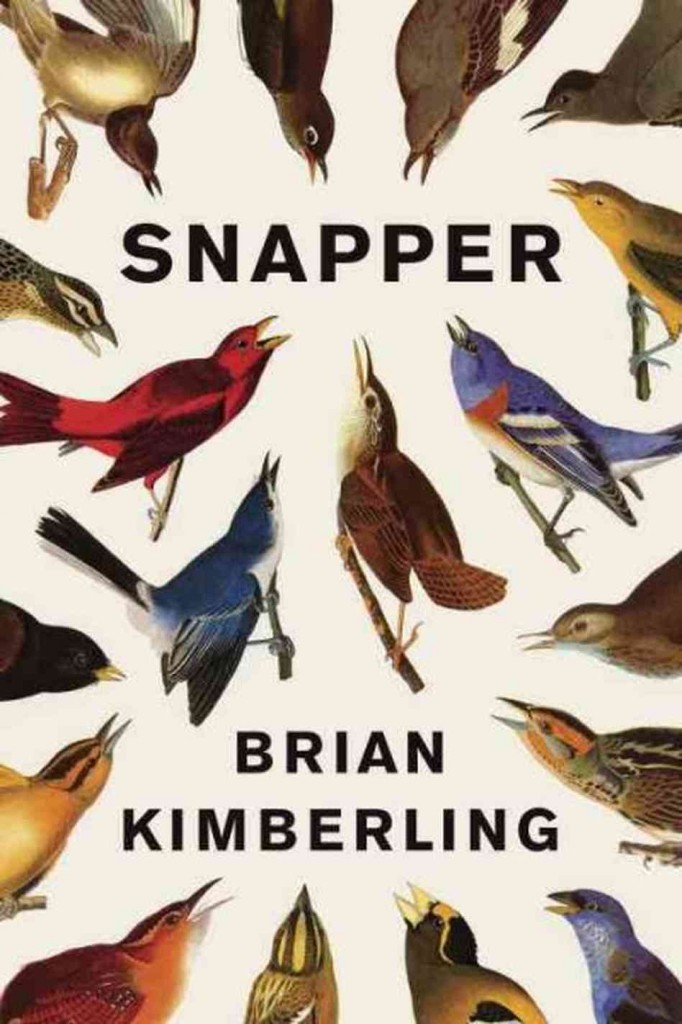By Dessa Bayrock (The Cascade) – Email
Print Edition: October 23, 2013
Maybe you shouldn’t judge a book by its cover, but this works in Snapper’s favour: birds surround the title as though it’s a grub they would like nothing more than to dig out of a rotten stump and feed to their squawking young.
The birds look like they’ve been cut from a wildlife guide and pasted on a clean sheet as part of an art project. Individually, they’re nothing special: mostly brown, unassuming, and the sort of birds you might see on your patio in the spring. But put together, they draw out the best in each other – highlighting differences in markings, stripes, and patches, and drawing out the undertones of orange, chestnut, and robin’s egg blue that lurk under the foundation of drab brown.
This is a fitting introduction to the book. Narrator Nathan Lochmueller observes Indiana birds for a living, carefully marking down who is nesting where and doing what. It’s a solitary gig, but also much harder than it sounds – the birds do their best to keep predators and threats (including Nathan) away from their homes. He has to use his wits—and his ears—to track his wily, flapping quarry.
This situation—Nathan plus birds plus Indiana wilderness—is quickly and thoroughly described at the beginning of the book, and just as quickly sinks into the background to serve as a locational foundation for all the events that unfold. The details of the Indiana forest are weirdly and surprisingly enrapturing – I can’t imagine any reason to go to Indiana, but when I put the book down I found myself with a bizarrely serious desire to visit. In a way, the location is more a main character than Nathan.
The format is the second surprisingly effective decision that Kimberling makes with Snapper: despite the fact that the same locales and characters appear throughout the book, Snapper is constructed as a series of short tales rather than a novel.
It comes off as a series of autobiographical stories, as though Nathan Lochmueller is a real person living in a small American town somewhere, quietly putting together the interesting tales of his life, maybe publishing them as a monthly column in the local newspaper before gathering them up into the collection that became Snapper. The believability of Nathan leads to an odd (although not unpleasant) split in the reader’s head: the narrator is at once completely real, and completely fictional.
It’s weird, and good, and a testament to Kimberling’s skill as a writer: it’s structured and detailed in exactly the right way, a perfectly realistic Indiana microworld. Each story links together, ranging from heartbreak to weather events to petty arguments between roommates.
It can be read as a meandering whole, or it can be digested one story at a time. All in all, it’s the kind of soothing, stress-free narrative that fits perfectly into the middle of semester.



